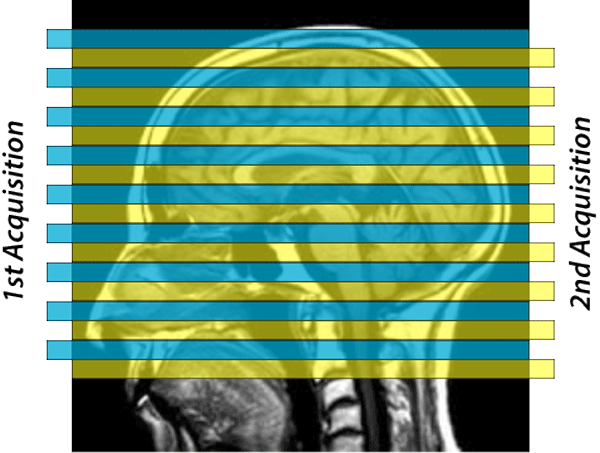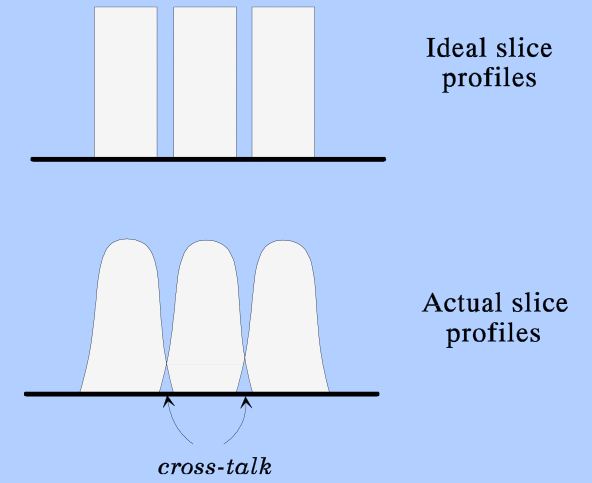|
Cross-talk refers to interference between adjacent slices in MR imaging. Cross-talk arises because the slice profiles generated by RF- pulses are not perfectly rectangular.
The simplest solution is to introduce small gaps on the order of 10-20% between slices so that the "tails" of the slice profiles do not overlap. If gapless imaging is desired, then two separate interleaved acquisitions may be employed.
|
The major MR vendors use slightly different terminologies to refer to this interslice spacing. GE, Philips, and Canon use the generic term "gap" that is prescribed in mm, while Hitachi uses the term "slice interval". Siemens specifies the slice gap indirectly, calling it the "distance factor". Siemens' "distance factor" is specified as a percentage of slice thickness rather than actual distance. So a distance factor of 20% applied to a group of 5-mm-thick slices means there is a 1-mm gap between them.
Advanced Discussion (show/hide)»
No supplementary material yet. Check back soon!
References
Kneeland JB, Shimakawa A, Wehrli FW. Effect of intersection spacing on MR image contrast and study time. Radiology 1986; 158:819-822.
Simmons A, Tofts PS, Barker GJ, Arridge SR. Sources of intensity nonuniformity in spin echo images at 1.5T. Magn Reson Med 1994: 32:121-128.
Kneeland JB, Shimakawa A, Wehrli FW. Effect of intersection spacing on MR image contrast and study time. Radiology 1986; 158:819-822.
Simmons A, Tofts PS, Barker GJ, Arridge SR. Sources of intensity nonuniformity in spin echo images at 1.5T. Magn Reson Med 1994: 32:121-128.
Related Questions
How does frequency-encoding let you stimulate a given slice?
How does frequency-encoding let you stimulate a given slice?



